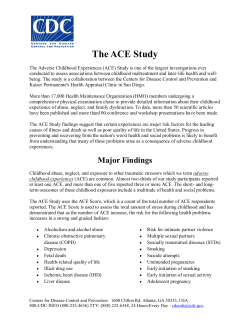
DISCLAIMER RANDOM SAMPLING AND 9/11/2013
9/11/2013 DISCLAIMER RANDOM SAMPLING AND PROBABILITY Prepared by: Jess Roel Q. Pesole RANDOM SAMPLE A sample selected from the population by a process that ensures the following characteristics: (1) Each possible sample of a given size has an equal chance of being selected (2) All the members of the population have an equal chance of being selected into the sample TYPES OF RANDOM SAMPLING 1. 2. 3. 4. 5. Simple Convenient Systematic Stratified Cluster • Due to time restrictions, this presentation will condense the lessons discussed in Chapters 8 and 10 of the book by Pagano. Please make sure to read the book to supplement your knowledge of the subject matter. WHY CONDUCT RANDOM SAMPLING? (1) Applying the laws of probability, this process is done in order to ensure that every person has a probable chance of being part of the sample (2) It makes the sample representative of the population. PROBABILITY • Relative likelihood of occurrence of any given outcome or event Probability of an event or outcome = Number of times the outcome or event can occur Total number of times any outcome or event can occur 1 9/11/2013 PROBABILITY RULES OF PROBABILITY • Example: What is the probability of drawing the Ace of Spades in a shuffled pack of 52 cards? Probability of an event or outcome = Number of times the outcome or event can occur Total number of times any outcome or event can occur = 1 52 ≈ 0.0192 ≈ 0.02 PROBABILITY • Example: What is the probability of NOT drawing the Ace of Spades in a shuffled pack of 52 cards? Probability of an event or outcome =1- Number of times the outcome or event can occur Total number of times any outcome or event can occur = 1 – (1/ 52) ≈ 1 – 0.0192 ≈ 0.9808 ≈ 0.98 RULES OF PROBABILITY 3. Multiplication rule - probability of obtaining a combination of independent outcomes equals the product of their separate probabilities P(Ace in first draw and Queen in second draw) = P(Ace in first draw) x P(Queen in second draw) = 4/52 x 4/52 = 16/2704 ≈ 0.0059 1. Converse rule - probability of an event not occurring - equals to 1 minus the probability of that event occurring Probability of an event or outcome not occurring = 1- Number of times the outcome or event can occur Total number of times any outcome or event can occur RULES OF PROBABILITY 2. Addition rule Under the addition rule, outcomes are considered as mutually exclusive (no two outcomes can occur simultaneously). Example: No single card from the deck can be an ace of spade or a queen of hearts at the same time. RULES OF PROBABILITY 2. Multiplication rule Under the multiplication rule, there is the assumption of independent outcomes (occurrence of one does not change the likelihood of another). Example: Getting an ace of spades in the first draw does NOT affect getting the queen of hearts in the second draw. 2 9/11/2013 EXERCISE • Research has shown that 6 out of 10 marriages end in divorce. What is the probability that a. A particular just-married couple stays married “until death do them part”? b. Two couples married in a double ceremony both get divorced? EXERCISE • A defendant in a criminal trial has a 0.42 probability of being convicted as charged, a 0.26 probability of being convicted of a lesser charge, and a 0.32 chance of being found not guilty. a. What is the probability that a defendant would be convicted of any charge? ANSWERS B. A. P (two couples divorce) P (no divorce) = P (divorce) * P = 1 – P (divorce) (divorce) = 1 – (6 / 10) = (6 / 10)*(6 / 10) = 1 – 0.60 = 0.60 * 0.60 = 0.40 = 0.36 EXERCISE A) P (conviction in any charge) = P (conviction as charged) + P (conviction of a lesser charge) = 0.42 + 0.26 = 0.68 EXERCISE EXERCISE • Suppose that 16% of inmates in Philippine prisons have psychiatric illnesses. What is the probability that a. A particular prisoner does not suffer from a psychiatric illness? b. That three prisoners do not suffer from a psychiatric illness? • Suppose the mean IQ for a group of psychopaths is 105 and the standard deviation is 7. Assuming a normal distribution, determine: a. The percentage of IQ scores between 100 and 110 b. The probability of selecting a psychopath at random who has an IQ between 100 and 110 3
© Copyright 2025





















